Premier Doug Ford says a COVID-19 vaccine will be available to Ontarians in early January 2021.
In his daily briefing on Monday, Ford said the provincial government is working with its federal counterparts to nail down exactly when Health Canada approvals will be granted and timelines on when Ontario will receive shipments.
Ford said the vaccine rollout will be a “massive logistical challenge” and his government has been working on the infrastructure and tools required to deliver the vaccine as smoothly as possible for months.
He announced a task force to oversee vaccine distribution, helmed by General Rick Hillier (retired).
“The fact that we are setting up this task force is a sign that we are making progress in the fight against COVID-19,” said Ford.
The vaccine rollout will be the “largest logistical undertaking in a generation” which will require military precision, the premier added.
“We need the discipline that only a general can bring to this task,” said Ford. “We still have a long way to go, but there is a light at the end of the tunnel. That’s why I have asked General Hillier to lead this effort, because we need the best of the best for the monumental task at hand.”
General Hillier (retired) previously served as the Chief of Defence for the Canadian Armed Forces and Commander of the NATO-led forces during the War in Afghanistan.
The COVID-19 Vaccine Distribution Task Force will include members from within and outside the government who have expertise in operations and logistics, federal-provincial relations, public health, immunization, health and clinical domains, ethics and information technology and data. Other members of the task force will be announced in the coming days.
The task force will provide recommendations on how to roll out a timely and efficient immunization program for the province, ensuring people can be vaccinated as quickly and safely as possible.
Ontario’s minister of health, Christine Elliott, reiterated that progress continues to be made with regards to the province securing doses of Pfizer and Moderna’s recently announced vaccines.
Last week, Elliott said Ontario will get roughly 1.6 million doses of Pfizer’s vaccine and around 800,000 of Moderna’s for proper distribution.
On Monday, pharmaceutical company AstraZeneca said that late-stage trials showed its COVID-19 vaccine was up to 90 per cent effective, giving public health officials hope they may soon have access to a vaccine that is cheaper and easier to distribute than some of its rivals.

Businesses struggling to pay the bills because of the COVID-19 pandemic will be able to start applying today for a long-awaited new commercial rent-relief program offered by the federal government.
The new Canada Emergency Rent Subsidy replaces an earlier rent-support program for businesses introduced in the spring that saw little pickup because it relied on landlords to apply for help.
The new program will cover up to 65 per cent of rent or commercial mortgage interest on a sliding scale based on revenue declines, with an extra 25 per cent available to the hardest-hit firms.
Federal cabinet ministers will highlight the program during a news conference this morning in which they will also open two initiatives designed to help businesses owned by Black Canadians.
The Canadian Federation of Independent Business, which represents thousands of small companies across the country, is welcoming the new rent program as long overdue for firms hard hit by COVID-19.
However, it is criticizing the government for not opening it to businesses that would have qualified for the previous rent-relief program, but could not access federal funds because their landlords chose not to apply.
This report by The Canadian Press was first published Nov. 23, 2020.
The Canadian Press
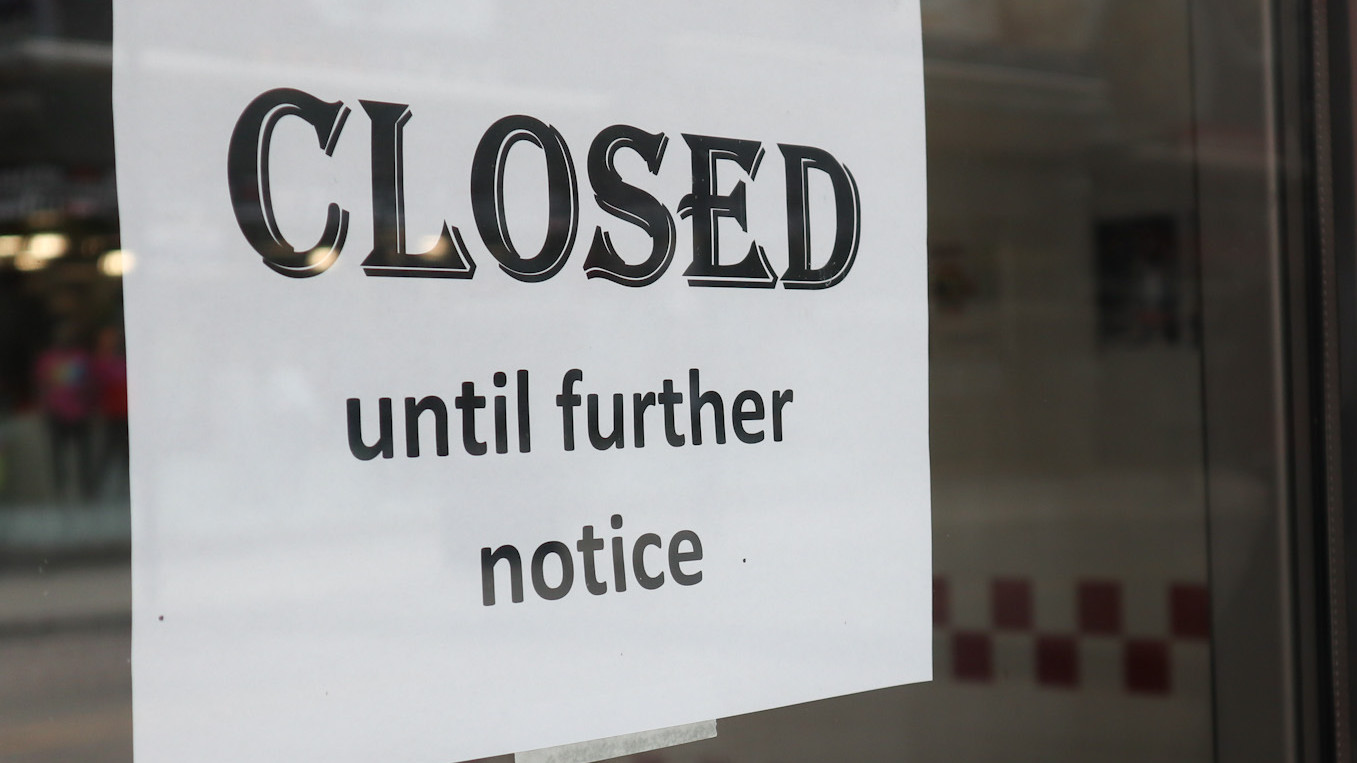
With Toronto and Peel Region becoming the first areas to enter the ‘lockdown’ tier of the province’s COVID-19 response framework as of 12:01 a.m. Monday for at least the next 28 days, here’s a look at what that means for residents in those areas.
WHAT’S OPEN
- Schools, childcare centres, pharmacies, doctors, and dentist offices will be staying open during the lockdown
- Essential services such as supermarkets, grocery stores, convenience stores, hardware stores, discount and department store-type retailers, LCBO and beer stores and safety supply stores will also be open. There will be a 50 per cent capacity limit for in-person shopping, which means there could be lineups to get into these places.
- Vet services will remain open
- Motor vehicle sales are permitted by appointment only
- Garden centres and plant nurseries are open by appointment only unless outdoor curbside pickup or delivery is available to the public
- Outdoor markets are allowed with current public health measures
CLOSED WITH NO EXCEPTIONS
- Hair salons and barber shops
- Nail salons
- Tattoo parlours
- Casinos, bingo halls and gaming establishments
- Amusement parks
- Strip clubs, bathhouses and sex clubs
- Museums, galleries, science centres, zoos and aquariums
CLOSED BUT WITH EXEMPTIONS
No indoor organized public events or social gatherings of any kind are allowed except with members of the same household. Outdoor gatherings, where physical distancing can be maintained, are limited to 10 people
Funerals, weddings, religious services
There is a limit of 10 people both indoors and outdoors as long as physical distancing can be maintained. The Catholic Archdiocese of Toronto says it is suspending public masses for the duration of the lockdown, however, churches will remain open for private prayer.
Restaurants, bars, food/drink establishments
Indoor and outdoor service is prohibited but establishments can offer take out, drive through and/or delivery which includes the sale of alcohol.
Retail malls
- Curbside pickup or delivery only for non-essential businesses; no in-person shopping
- Essential businesses located within malls are permitted to be open with 50 per cent capacity limits
- Food courts are open for take-away service only
- Two-metres of physical distancing must be maintained while standing in line
Sports and recreation facilities, gyms, fitness centres
- All gyms are closed
- All indoor facilities such as courts, pools and rinks are closed
- Indoor team and individual sports are prohibited, including training. Exemptions are in place for high performance and pro league teams/athletes
- Community centres and multi-purpose facilities are allowed to be open for such things as child care services
- Outdoor sports, classes and amenities are limited to 10 people
Meeting and Event spaces
These spaces are closed with exemptions for court and government services while mental health and addiction support services are limited to 10 people.
Movie theatres/cinemas
Only drive-in theatres/cinemas are permitted.
Cannabis
Cannabis dispensaries can only offer curbside pickup. No in-person shopping.
Driving instruction
In-person instruction is not allowed; virtual instruction is permitted.
Horse racing
No races are allowed, only training.
Housekeeping, maids, nanny services, babysitters, maintenance services
All of these are permitted with public health measures.
Hotels, motels
Hotels and motels can remain open but pools, fitness centres and meeting rooms are all closed
Libraries
- Curbside delivery and pick-up permitted
- May be open for permitted services such as daycare
- No classes allowed
Nightclubs
Nightclubs can only remain open if they offer take-out, drive through or delivery of food/drink service.

Toronto and Peel Region have entered the lockdown stage of Ontario’s pandemic protection plan.
It means that for at least the next 28 days, non-essential retailers can only offer curbside pickup, while restaurants are closed to all but takeout and delivery orders in the two COVID-19 hot spots.
Personal services have also been forced to close, but schools and child-care centres remain open.
Premier Doug Ford announced the move on Friday, but it didn’t come into effect until 12:01 a.m. Monday.
That gave residents of Toronto and Peel the chance to stock up over the weekend — flooding local malls, even as they extended hours in an effort to prevent too many people from coming at once.
While Toronto and Peel face the strictest measures, other areas of the province are also seeing rules tighten.
Durham Region and Waterloo joined York Region in the red classification on Monday. The rules limit restaurants, gyms and food courts to 10 indoor patrons with social distancing, with even tighter restrictions on private gatherings.
The areas around Huron, Perth, Simcoe, Muskoka, and Windsor-Essex have moved to the orange classification, which caps gatherings at staffed businesses to 50 people indoors, or four per table at restaurants.

MISSISSAUGA — Police in Peel Region have ended a program that placed officers in schools, saying it found the long-running initiative had a negative impact on parts of the student population
The force that serves the cities of Mississauga, Brampton and Caledon says it paused school resource officer program in July.
It says the program, which largely served high schools, had not changed in more than 20 years.
The force says it conducted community consultations over the summer and found that change was necessary.
It says police will continue to work with the community on programming that engages students.
The development in Peel comes after the Hamilton-Wentworth District School Board voted to end a similar program in June, while Toronto eliminated its school resource officer program in 2017.

OTTAWA — Prime Minister Justin Trudeau will amplify his plea for Canadians to stay home as much as possible after alarming new projections for the spread of COVID-19 in Canada are released today.
The updated projections are expected to forecast a dramatic rise in cases over the next few weeks — to as much as 60,000 new cases a day by the end of the year — if Canadians don’t strictly limit their contact with people outside their households.
Trudeau is to hold a news conference after the latest modelling is unveiled by chief public health officer Dr. Theresa Tam this morning.
To underscore the importance of minimizing contacts, Trudeau will conduct the news conference outside his home, Rideau Cottage — the site of his daily briefings during the first wave of the deadly pandemic last spring.
He ended that practice over the summer when the pandemic went into a bit of a lull and, throughout the fall until now, he has joined Tam and select ministers at news conferences on Parliament Hill once or twice a week.
Tam has already warned that Canada is on track to hit more than 10,000 cases per day by early December if Canadians maintain their current rate of contacts outside their household.
That’s more than double the current daily case count, which is already straining the health care system in some regions.
Sources briefed on the latest modelling say it projects a much worse scenario by the end of December — 20,000 cases per day at the current rate of contacts and as much as 60,000 a day if Canadians increase their number of contacts as the holiday season approaches.
The sources spoke on condition of anonymity because they were not authorized to speak publicly about the modelling before its official release.
Tam has said Canadians need to reduce their current rate of contact with others by at least 25 per cent in order to flatten the curve.
And last week, she and her deputy, Howard Njoo, gave a graphic description of the consequences if the trajectory toward more than 10,000 cases per day is not halted.
At the current level of just under 5,000 cases per day, Tam said routine medical procedures are being cancelled, intensive care beds are almost full and health-care workers are exhausted.
“So you can only imagine that if we got to that level (of 10,000), that the pressure on the health-care system will be huge,” she told a news conference in Ottawa on Nov. 13.
Njoo pointed to what happened in northern Italy and New York City last spring, when their health systems were overwhelmed.
“Doctors were having to make a life and death decision in terms of who would be on a ventilator, who wouldn’t. And who wants to be in that position?”
For several weeks, Trudeau has been almost begging premiers to impose more stringent restrictions on businesses and social gatherings in order to get the soaring caseload under control.
He has warned that the federal government’s resources are not infinite and that, if cases continue to increase exponentially, Ottawa’s ability to help premiers cope with the health crisis will be strained.
Trudeau has suggested, for instance, that Ottawa might have to begin choosing which regions will get personal protective equipment or Red Cross help to operate hard-hit long-term care homes.
This report by The Canadian Press was first published Nov. 20, 2020.
The Canadian Press

A long-time Ontario provincial police officer was killed Thursday in a shooting that also left a civilian dead in the tight-knit community of Manitoulin Island along Georgian Bay.
The officer has been identified as Const. Marc Hovingh, who had been a member of the service for 28 years and worked out of the Little Current detachment.
The officer had been called to investigate an “unwanted man” on a property in Gore Bay early Thursday afternoon, the province’s police watchdog said.
The Special Investigations Unit (SIU) is now investigating the incident. In a statement, the SIU said police received a call at around 12:30 p.m. for an unwanted person on a property.
“Soon after officers arrived on the scene they encountered the man and there was an interaction,” explained SIU spokesperson Monica Hudon.
“As a result of that interaction, one OPP officer sustained a fatal gunshot wound. The man (civilian) was also shot and he was taken to hospital where he was pronounced deceased.”
There’s no word on the identity of the deceased civilian.
Initial reports suggested a second officer was shot as well, but officials now say that’s not the case.
Premier Doug Ford has issued a statement offering his condolences, saying he was “deeply saddened to learn of the death of Provincial Constable Marc Hovingh who was shot and killed in the line of duty…”
“Our government has requested that the flags at Queen’s Park be lowered out of respect for the fallen and their family who are grieving at this very difficult time.”
“My thoughts are with all the brave men and women on the frontlines who put their lives on the line every day to keep our communities safe.”
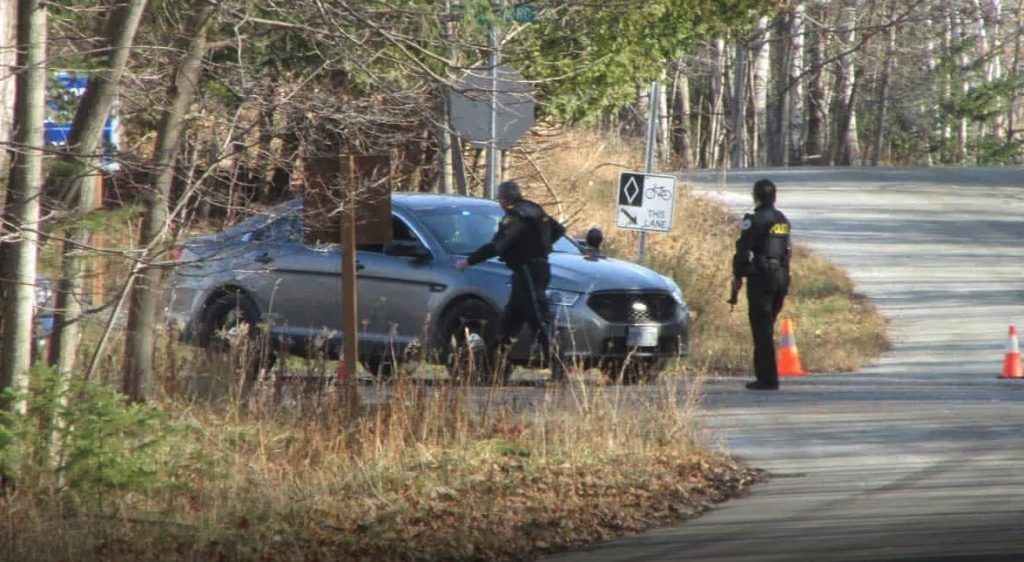
The news quickly made its way through the small island community, said Dan Osborne, mayor of Gore Bay one of several towns on the island.
He said he heard the sirens blaring early in the afternoon.
“We’re a large island, but we are small in numbers,” he said. “Everybody knows everyone, and it’s pretty devastating.”
Michael Mantha, who represents Manitoulin Island in the provincial legislature, said OPP officers are an important part of the community.
“The tight-knit community of Manitoulin Island is devastated at the tragic loss of Constable Marc Hovingh,” he said. “…We will be forever changed by the devastating loss of one of our own.”
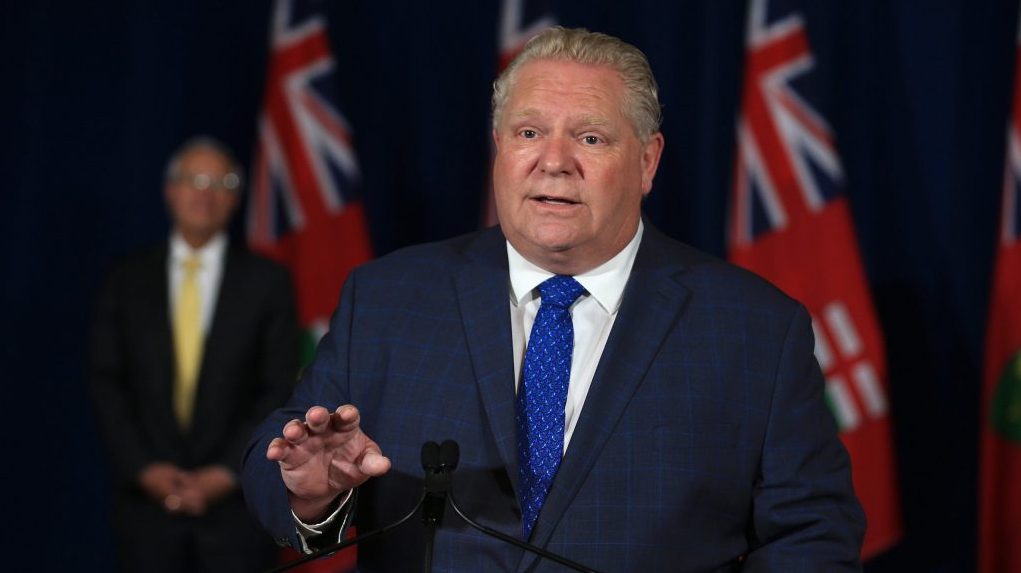
Ontario’s premier is expected to announce today what new restrictions the province’s COVID-19 hotspots will face amid soaring case numbers.
Doug Ford had said on Wednesday that an announcement regarding new health and safety measures is on the horizon.
“We’re continuing to see extremely, extremely troubling numbers in Peel, Toronto and York Region,” Ford said on Wednesday.
“The virus is spreading at an alarming rate in these areas and I can’t stress this enough; this situation is extremely, extremely serious. Last week, I asked the chief medical officer of health to come back with his recommendations and what we need to do to flatten the curve in a second wave.”
Ford said the new measures, which could be aimed specifically at Toronto and Peel, will be discussed at cabinet and announced in the coming days.
Peel Public Health data – Nov. 18

Of the several regions currently in the province’s ‘Red Zone‘, the regional breakdown had Peel back out in front of Toronto with 463 cases compared to 410 in those two areas alone, accounting for 62 per cent of the province’s new infections.
“We’re going to get advice off the chief medical officer and bring it to cabinet and will have an announcement on Friday,” Ford said.
“I have mentioned it before, I won’t hesitate to lock things down, to protect the health and safety of every person in this province. Without the health and safety, we don’t have an economy. We will take a more targeted approach in the hotspots.”
Ontario said 33,4400 tests were completed on Wednesday, up from Tuesday but down from last week’s averages. Test positivity is at 4.5 per cent province-wide and down from yesterday’s increase to 6.1 per cent.
Last week, the Ford government announced sweeping modifications to its COVID-19 colour-coded framework and thresholds, adding several regions — including York, Halton and Hamilton — to its ‘Red Zone.’
Ontario epidemiology report – Nov. 1 – Nov. 7

Toronto Public Health updated its case records from Nov. 14, when there were 40 unreported cases resulting in an overestimation of counts. The City is seeing a decline in cases compared to Tuesday with 410, down from 569 cases.
“My friends, we need to hunker down. We need to stick together because together, we’ll get through this.”
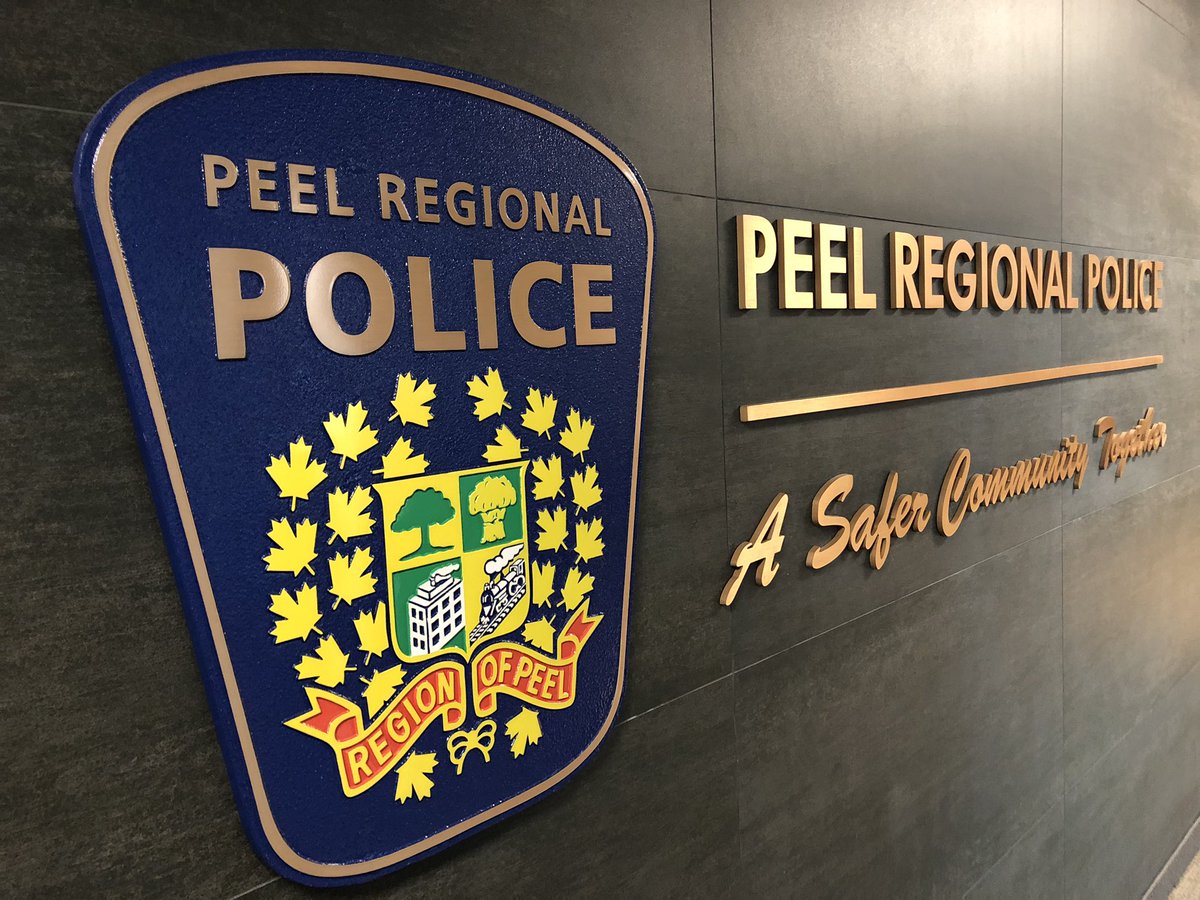
Peel Regional Police is dissolving its School Resource Officer (SRO) program because it “caused a negative impact on segments of our student population,” they said in a release on Wednesday night.
Earlier this year the decades old program was paused because the force said it had not changed it 20 years and “required significant review.” They acknowledged that there were long-standing concerns about systemic racism in the SRO program and “and the disproportionately punitive effects this type of traditional programming can produce.”
The review focused specifically on police interactions with students and a community-facing committee worked with police to understand the lived experiences of those affected by the program.
“Based on recommendations made by those most negatively impacted by this programming, the SRO program no longer exists,” they said in the release.
The force says it is publicly acknowledging that “change is necessary.”
“Moving forward, PRP will continue to work with our community regarding student engagement programming,” they said.
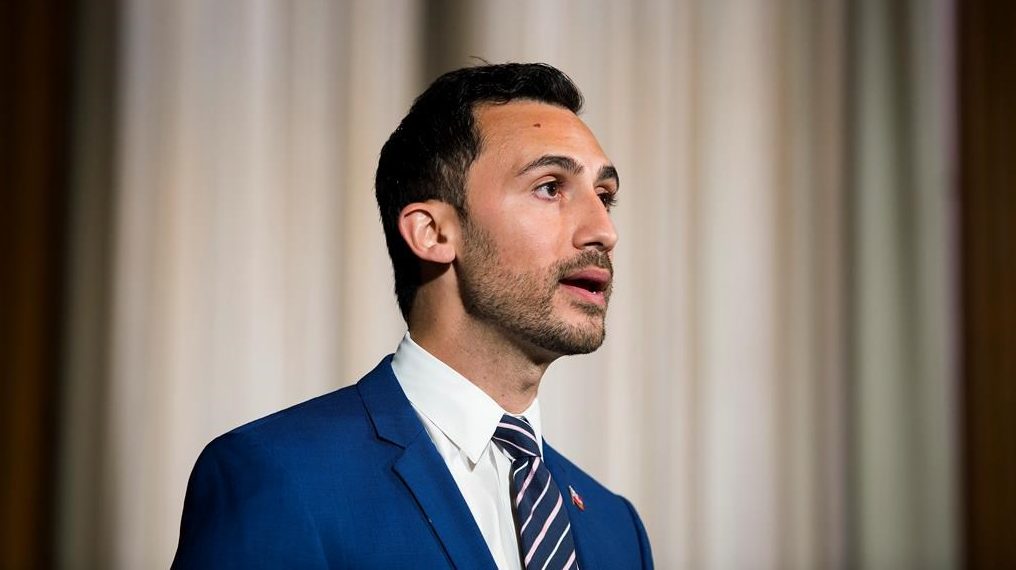
Ontario students will not have an extended winter holiday, Education Minister Stephen Lecce announced on Wednesday.
The idea of extending the annual break was being considered as a way to impede the spread of COVID-19 in the province, but Lecce announced Wednesday that after consulting with health officials it wasn’t deemed necessary.
“We have consulted with the Chief Medical Officer of Health as well as the Public Health Measures Table and have determined that an extended winter holiday is not necessary at this time, given Ontario’s strong safety protocols, low levels of transmission and safety within our schools,” Lecce said in a release.
Lecce stressed that Ontario schools have been “remarkably successful at minimizing outbreaks” during a second wave of the virus that’s seen record-breaking daily counts, most notably in Toronto and Peel Region.
“As we safeguard the progress we’ve made in our schools, we will continue to closely monitor all indicators, trends and numbers to protect the safety of our children, their families and all frontline staff in Ontario’s schools,” he added.
The decision comes on the same day that the Canadian Union of Public Employees (CUPE) announced the death of a Toronto Catholic District School Board (TCDSB) staff member from COVID-19.
“CUPE Ontario’s 280,000 members mourn the loss of our sister, a CUPE education worker at who passed away after contracting COVID-19. Our solidarity and condolences to her family, friends, and all her union colleagues,” the union said in a tweet Wednesday afternoon.
As of Wednesday at 10:30 a.m. provincial statistics reveal a total of 3,626 school-related COVID-19 cases so far in the province.
Of those cases, 2,077 have involved students and 670 schools have had at least one case. That represents almost 14 per cent of all Ontario schools.
So far, three schools have had to close as a result of COVID-19 outbreaks.





















